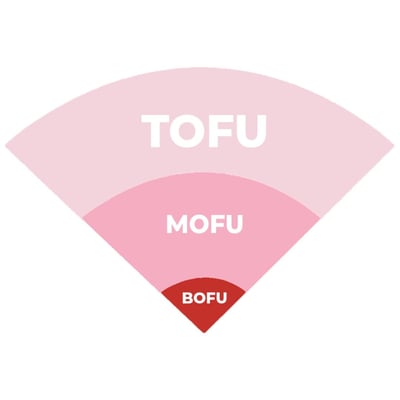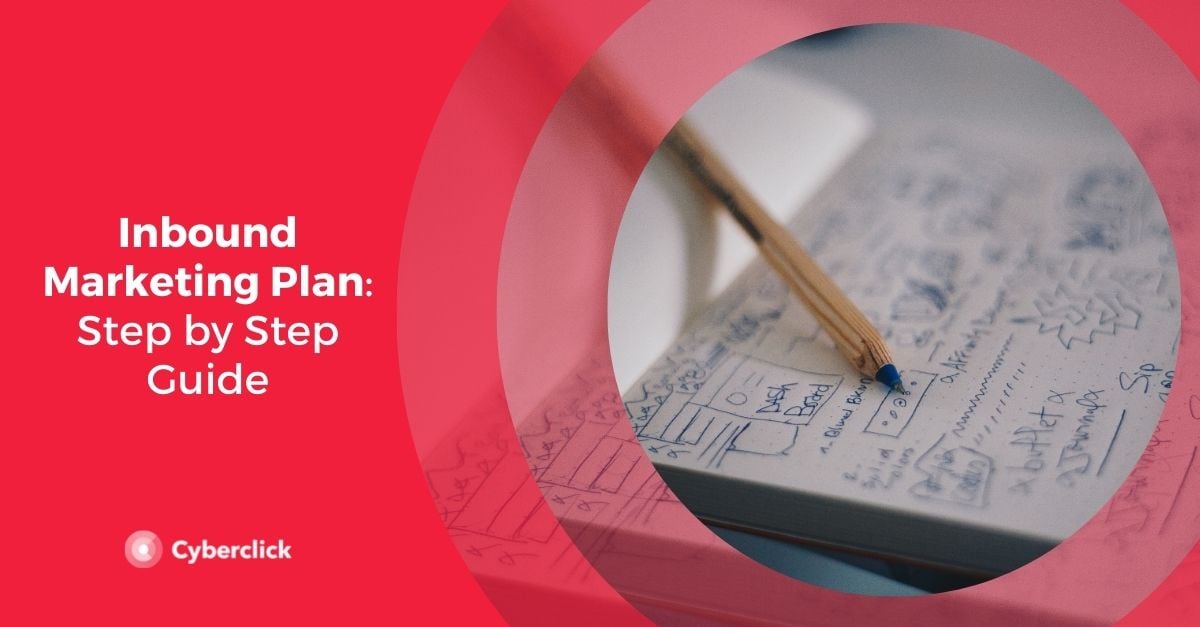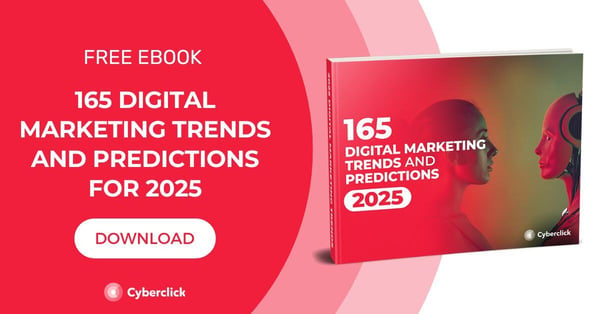By David Tomas, on 16 March 2020
An inbound marketing plan is an essential reference document that guides all of your inbound efforts and tactics, ultimately allowing you to achieve success. But many companies don’t create their plan properly - or even worst, don’t make a plan at all.
To get the best results from your inbound marketing campaign, we have created this complete step-by-step guide on everything you need to create an inbound marketing plan. Let’s get started!
1. Investigate: How to Create an Inbound Marketing Plan
Inbound marketing requires a lot of research and background knowledge before diving into any tactics. It’s easy to accidentally get ahead of yourself with inbound marketing, but there are a few key steps we have to take before activating a campaign.
Buyer Persona: Who Are You Addressing?
If you want to launch an inbound marketing campaign but you haven’t yet defined your buyer persona, well then its time to get down to business. Without a clear idea of who you’re targeting, it will be impossible to accurately identify the right channels, actions, and segmentation for your audience.
Simply put, a buyer persona is a semi-fictitious representation of your ideal customer. The idea is that the buyer persona will help you understand what your clients need by taking a more holistic, “in their shoes” view of their needs and concerns. That’s why it’s recommended to give your buyer personas names, ages, and even an image so that you can easily empathize and understand your future clients.
It is important to understand the distinction between a buyer persona and a target audience. The target audience is defined by a number of different characteristics, including demographics, location, and occupation. A buyer persona goes deeper than a target audience and looks at the specific pain points, habits, and questions that your preferred type of customer would have.
A key aspect to making your buyer persona effective is centralizing the “pain points” of your different personas. Examine the goals that these users want to achieve and the difficulties that they have achieving those goals. By having a grasp on this information, you can create content that helps them tackle those objectives.
The Buyer Journey and Conversion Funnel
Within an inbound marketing plan, the buyer journey allows you to understand everything that occurs from the perspective of the client, from the first moment they visit your website up until they become a loyal customer.
Throughout this journey, the customer goes through a series of different phases (research, decision making, loyalty...), giving rise to different potential points of contact for you to reach them. In each one of these phases, the user will need different information from your brand, likely through different mediums. Because of this, it is essential to create a background study of these different phases and the best way to satisfy the needs of the users in each stage.
.png?width=600&name=Inbound%20Marketing%20Workflow%20-%20EN%20(1).png)
The other side of the customer journey is the conversion funnel. The conversions funnel explains each stage of the buyer journey and organizes your marketing actions. If we graphically represent the entire lead base, you would find that there are more users with a potential need than customers who have actually converted. This means that the number of people in each phase goes from more to less. By representing this graphically, we have the famous funnel.
In general, the funnel is divided into 3 stages:
- TOFU (Top of the Funnel): A user who is at the top of the funnel has realized that they have a problem that they need to resolve, and they have started to look for a solution. In order to attract them, you have to create content that can help aid their issue in a way that makes them become interested in your brand and trust your brand for future related needs.
- MOFU (Middle of the Funnel): A user who is in the middle of the conversion funnel has a clearer understanding of what they want and is evaluating different options, including your brand. During this stage, you have to offer content that is more specialized, normally in exchange for the user’s contact information. This is how you convert a user into a lead, which will allow you to form a relationship with the lead.
- BOFU (Bottom of the Funnel): Finally, the bottom of the funnel is the stage where users just need that final push in order to convert and complete the journey down the funnel. In this phase, you can deliver trials, discounts, special offers, or special services that will incentivize the user.

Inbound Marketing Objectives
The last prerequisite before diving into campaign planning is to define the objectives of your inbound marketing campaign. These are fundamental for measuring the success of your actions and tactics. And as you have probably guessed, generic approaches like “sell more” or “increase brand awareness” don’t do much.
For our marketing objectives to actually work, they should have a few similar characteristics:
- They should be concrete and measurable. For example, “get 400 leads through our newsletter.” They need to be specific so that there is an objective way of determining if you’ve reached your objectives or not.
- They should be precise. Each objective should be associated with a KPI (key performance indicator) so that we can understand our progress both during and after the campaign.
- They should be attainable. If your goals are not realistic, then you will only be discouraged by your goals, not motivated.
- Have a set date. Your goal should be attached to a set date to motivate you and give you a realistic time frame.
2. Inbound Marketing Strategy: Attracting and Nurturing Leads
Now that we’ve done some research and goal setting, it’s time to dive into defining the actions and tactics to use to attract clients to your website, and move them along the conversion funnel. Depending on the company’s circumstances and characteristics, there are many different strategies and channels to use. Let’s review how to choose the different methods for your inbound marketing plan.
SEO and SEM Strategy
SEO and SEM are two tools that you can use to boost traffic to your website. While SEO seeks to achieve long-term organic results, SEM is a good solution to position our website immediately through advertisements.
A common mistake that you have to avoid in your inbound marketing plan is defining your SEO and SEM strategies separately; rather, they are complementary and should be strategized together. For example, we can set up SEM efforts to fill in the areas where we are finding it harder to position organically. Or, we can launch short-term, conversion-oriented campaigns. It’s also important to remember that well managed SEM campaigns can help improve your SEO in the long run.
In both cases, you have to conduct an in-depth investigation of the keywords that are relevant to your brand, through tools such as the Google Ads keyword planner. This will help you to identify the keywords that should be part of your SEM strategy and those that you want to position for using SEO. You must also always distinguish between non-branded or generic search terms and branded (including your brand), since competitiveness, the volume of searches, and the user's intentions can be very different.
Content and Social Media Strategy
A well defined content strategy goes beyond having a company blog. Rather than thinking about content in one specific format, think about what kind of content will best help a user at each stage of the buyer journey. This ranges from generic blog content to highly specific guides or downloadables.
Your content strategy can include blog posts, ebook, white papers, templates, guides, video tutorials, customer testimonials, success case studies, etc. Essentially whatever you think can help your buyer persona solve their issue or learn more about a topic. All of these content pieces must align with the tone and values of the brand, and you have to distribute them in a coherent calendar throughout the season.
In most cases, including one or more social networks in your inbound marketing plan will help spread your content and connect with users. Before deciding on a particular channel, investigate where users who are similar to your buyer are most active.
And to reinforce your social strategy, and continue to attract traffic to our sites, take into account the possibility of using social ads.
Optimization to Capture Leads
Once you’ve attracted the user to your page, the next step is turning them into a lead. To do this you have to define a few key aspects within the inbound marketing plan, such as:
- The structure and design of the landing pages: This aspect is vital for conversion ratios, so I always recommend taking time to do A/B tests to find the most effective design.
- Form Optimization: Your forms should be able to collect enough user information so that you can determine if you are interested in the lead, yet it's also important to use as few fields as possible. Again, I recommend testing with A/B tests to find a balance.
- Calls to action: Optimizing this element is one of the fastest and most effective ways to increase conversions. In addition to experimenting with text, try different colors and button locations.
Lead Scoring and Nurturing
After the user has become a lead, you then need to define what actions to take so that they end up becoming a customer. To do this, we will rely on these two tools:
- Lead scoring consists of assigning a score to each lead based on a number of features that determine if we are really interested as a customer and how close they are to converting.
- Lead nurturing is based on sending leads a series of personalized messages or content based on their score and individual characteristics, in order to give them the information they need to become customers. In many cases, these messages are done through email marketing.
Marketing Automation
Marketing automation is a resource that allows you to simplify recruitment and nurturing processes, as well as offer customized content to a high volume of users. Using marketing automation in your inbound marketing strategy will allow you to work much more effectively and be able to easily scale your marketing actions.
3. Monitoring Your Inbound Marketing Strategy
There is only one ingredient left in your inbound marketing plan: Figure out how to measure progress.
Every marketing strategy requires continuous follow-up with regular checkpoints, such as a meeting with the team every two weeks to share a performance report and see the following actions to follow. The metrics included in your report should respond to the KPIs that you defined in the first steps of the inbound marketing plan.
It is also important to have a contingency plan that sets out the steps you need to take in case your goals are not being met. And last but not least, I want to remind you that a good inbound marketing strategy has to have a certain degree of flexibility to be able to adapt to unforeseen events and correct the course if necessary. Your inbound plan should be a tool that helps you progress, and it should never become an obstacle.
With these steps you are now on your way to building a strong inbound marketing plan. What are you waiting for?



